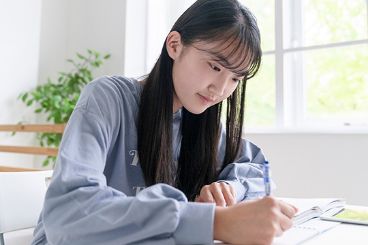Let's tackle social challenges through innovation with Epson!
Epson and Kitakata City, Fukushima, Sign a Collaboration Agreement to Build a Future for the Region by Combining Local Traditions and Epson's Digital Technology
- Epson and Kitakata City signed a collaboration agreement to revitalize the region by capitalizing on local tradition and art.
- Introduce Epson and Kitakata's co-creation activities to date, focusing mainly on "Aizukata," patterning stencils designated as an essential tangible folk cultural property.
- The goal is to solve local problems and create a sustainable community by capitalizing on the region's rich historical tourism resources and traditions.
On October 30, 2023, Seiko Epson ("Epson") and Kitakata, a city in Fukushima Prefecture, signed a collaboration agreement to revitalize the region by utilizing tradition, culture, and art. This article describes the day of the signing ceremony, the events that led up to the agreement, and the initiatives implemented.
A related news release can be found here: Epson signed a partnership agreement with Kitakata City, Fukushima Prefecture (Japanese only).
■Chuichi Endo (left)
Kitakata Mayor
■Junkichi Yoshida (right)
Seiko Epson Corporation Executive Officer
Chief Operating Officer, Printing Solutions Division

Events leading to the collaboration agreement between Epson and Kitakata

Kitakata, located in the Aizu region of Fukushima Prefecture, is a land of diverse traditions and cultural arts. It is known as the birthplace of Kitakata ramen, renowned as one of Japan's "big three" ramen. It is also known for the unique earthen storehouses that line the streets. It has a long history, and various efforts that leverage its historical and cultural resources have been undertaken.
Aizu-kata, paper stencils used when dyeing patterns on items such as kimonos, have been designated an important tangible folk cultural property of Kitakata. Cherished widely in the Tohoku region during the 100 years from the second quarter of the 19th century, Aizu-kata peaked in the first quarter of the 20th century. Still, the era of Aizukata ended early in the Showa period (1926-1989). About 50 years later, more than 36,000 of these stencils were discovered in a storehouse of the Onodera family. Discovered along with them were chisels and other tools, ledgers, and sample books. All were donated to Kitakata City as precious cultural assets.


Aizukata has enjoyed something of a rebirth in the modern age. However, they still need to be widely recognized by the local populace, and the city has been trying to find ways to utilize this treasure trove of artifacts. To help build awareness of Aizukata, Epson utilized digital data of the archived stencils to create original media using digital technology's unique powers of expression. For example, we provided noren (shop curtains) printed with Aizukata designs to be hung at Kitakata's satellite office to remind people that Aizukata is a unique piece of the local culture. In May 2023, the city of Kitakata recognized Epson's efforts by presenting it with a certificate of appreciation.


Kitakata and Epson's efforts involving Aizukata are not limited to Japan. The International Textile Machinery Exhibition (ITMA) is held once every four years worldwide. In 2023, the event was held in Milan, Italy. At this exhibition, Epson produced original promotional giveaways (placemats) in its booth. Aizu-kata designs were printed on the placemats and made from Aizu cotton, a traditional plain weave cotton cloth from the Aizu region that is durable and was traditionally used to make loose outer garments worn by peasants.
These giveaways had a QR code that could be used to access websites introducing Kitakata City and Aizu-kata design patterns. This idea was very well received, and access to the site was robust, providing an opportunity to introduce Kitakata and Aizu-kata to the world.
See the following link for details on ITMA: Epson exhibits at the quadrennial ITMA! Take a look inside the 50m x 20m booth. (Japanese only)
This collaboration agreement aims to accelerate creative community engagement activities by utilizing Epson's unique digital technology and the cultural resources of Kitakata, revitalizing the community and contributing to social sustainability.

Epson and Kitakata's efforts to promote traditional arts and culture

Kitakata Aizukata Week 2023 was held in Kitakata City in the second half of October. During the event, a group from a national council dedicated to preserving traditional districts visited Kitakata for a tour. Epson exhibited samples utilizing digital Aizukata designs inside the Odazuki District Satellite Office.
Students studying local traditional culture and tourism served as tour guides. Epson provided name tags and scarves decorated with Aizukata for use during the tour.
Samples of the Aizukata place mats were popular with visitors to the Epson booth. Some even asked where they could buy the mat. We realized that the outstanding design quality of Aizukata has more than enough commercial value even today.


During Kitakata Aizukata Week 2023, an exhibit of authentic Aizukata paper stencils was put on display in a traditional Japanese folk house across from the satellite office. The exhibit included stencils made from reused Japanese paper, a precious resource back in the day.
The effective utilization of existing resources to create new value is something that can be seen today in Epson's sustainability efforts. You could say that Kitakata and Epson's efforts to find new uses for Aizukata are an extension of this.

Familiarizing the younger generation with Aizukata in education using projection mapping
Projection mapping was used to display Aizukata designs onto a miniature model of a traditional storehouse in a tatami room booth at the back of the satellite office. The model was created in a unique hands-on class at Kitakata Tooh High School during the previous year's Aizukata Week activities.
In the class, the theme was "familiar cultural assets" and "programming-like thinking," a white warehouse model was used as a screen, and data for 16 different Aizukata designs were used to program the projection with a special application. The aim was to familiarize students with Aizukata while developing their self-expression, composition, and problem-solving skills as they assemble a program. The students all designed their own patterns and took on the challenge of projection mapping.
In this way, Epson and Kitakata not only facilitated the use of print technology to promote the utilization of tourism resources but also reached young people who use digital technology. The partners believe that carrying on local traditions and culture by sharing them more widely with the younger generation will be a step forward toward regional development and a sustainable future.


The collaboration agreement ceremony and efforts to create a sustainable regional community

A ceremony commemorating the collaboration agreement was held in a conference room at Kitakata City Hall. Mayor Endo and Seiko Epson's Junkichi Yoshida took the stage to sign the agreement and deliver remarks. A discussion followed the ceremony.
The discussion was amiable and relaxed from start to finish. They touched on topics such as Kitakata's hot springs and sake while exchanging ideas on creating cultural and artistic value, including utilizing Aizukata and expanding awareness. A variety of goods printed with Aizukata designs using Epson's technology were on exhibit. The mayor took them in his hands for closer examination, asked questions about the printing technology, and threw out ideas for their use.
Referring to Kitakata City's many cultural and artistic local resources, Epson's COO Yoshida concluded his address at the signing ceremony as follows:
"... the city's PR movie included the phrase "It is always better to have more joy" to describe Kitakata. In Kitakata City, more than 200 valuable cultural assets have been protected and passed down by your forebears. Epson will deepen its collaboration with the city of Kitakata and, together with the citizenry, will support Kitakata in its efforts to show itself as a city of joy and discovery, as well as a birthplace of culture and art, through attractions and encounters created based on traditions, culture, and art."

Events conducted: October 2023
Written interview content and names of organization, affiliations, and titles, etc. are as of the time of the event.



